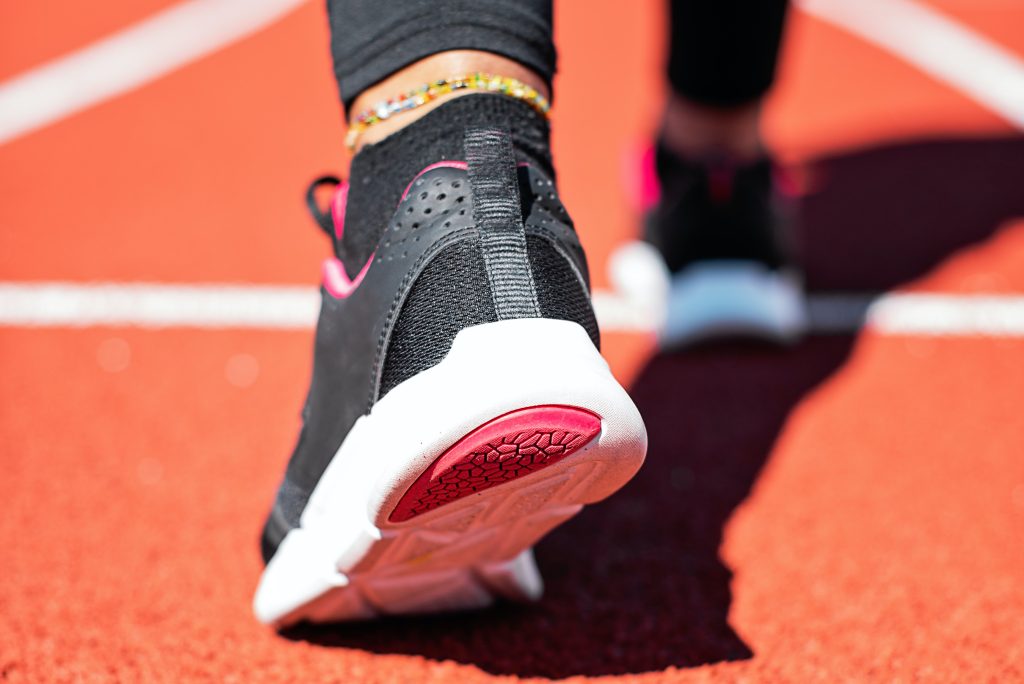Discover how orthotic insoles can provide crucial support for your back and spine.
Understanding How Orthotic Insoles Support the Back and Spine

For many people, back pain is a constant companion. Whether it’s lugging around heavy backpacks or sitting all day at a desk, our backs take a beating. But did you know that your feet could be contributing to your back problems? That’s right – the connection between your feet and spinal health is a vital one. And that’s where orthotic insoles come to the rescue. These nifty inserts provide the support and alignment your feet need to keep your back and spine in tip-top shape. In this article, we’ll dive into the ins and outs of orthotic insoles, exploring how they work their magic and why they are crucial for maintaining a healthy back and spine.
The Anatomy of the Back and Spine
Before we jump into the world of orthotic insoles, let’s take a moment to understand the amazing complexity of our back and spine. Think of your spine as a superhero, always there to save the day. Not only does it support your body, but it also protects your spinal cord, which is like the control center of your entire nervous system. Without a properly functioning spine, your body wouldn’t be able to move, stand tall, or provide the necessary support for your daily activities.
Now, let’s delve deeper into the fascinating world of the back and spine. The spine is made up of a series of bones called vertebrae, which are stacked on top of each other like building blocks. These vertebrae are connected by small joints called facet joints, allowing for flexibility and movement. In between each vertebra, there are intervertebral discs, which act as shock absorbers, cushioning the spine and preventing it from grinding against itself.
But the spine is not just a stack of bones. It is a complex structure that houses and protects the spinal cord. The spinal cord is a long, thin bundle of nerves that carries messages between the brain and the rest of the body. It is encased within the spinal canal, which is formed by the vertebrae. This protective casing ensures that the delicate spinal cord is shielded from any potential damage.
The Role of the Spine in Posture and Movement
Think of your spine as the backbone of good posture. When your spine is properly aligned, your muscles and ligaments work together harmoniously to keep you balanced. This, in turn, prevents undue stress on your back and helps you maintain optimal posture. So, thank your spine for allowing you to strut your stuff with confidence!
Good posture not only makes you look taller and more confident, but it also has numerous health benefits. When your spine is aligned, it reduces the strain on your muscles, ligaments, and joints, decreasing the risk of developing chronic pain and injuries. Additionally, proper posture allows for better breathing, as it opens up the chest and allows the lungs to expand fully. So, stand tall and reap the rewards of a well-aligned spine!
How the Back Supports the Body
While we’re on the subject of superheroes, let’s not forget about your back muscles. Without them, you’d be as flexible as a brick. Your back muscles are the unsung heroes that provide stability and strength, allowing you to bend, twist, and lift with ease. So, show some love to your back muscles – they deserve it!
The back muscles can be divided into two main groups: the superficial muscles and the deep muscles. The superficial muscles, such as the latissimus dorsi and the trapezius, are responsible for large movements, like pulling, lifting, and rotating the upper body. On the other hand, the deep muscles, such as the erector spinae and the multifidus, are responsible for maintaining posture and providing stability to the spine.
These muscles work in harmony to support the body and allow for a wide range of movements. Whether you’re reaching for something on a high shelf, bending down to tie your shoes, or twisting to look behind you, your back muscles are there, working tirelessly to ensure that you can perform these actions with ease and without pain.
So, the next time you feel a slight twinge in your back or find yourself effortlessly lifting a heavy object, take a moment to appreciate the incredible complexity and strength of your back and spine. They are truly remarkable structures that deserve our admiration and care.
The Science Behind Orthotic Insoles
Now that we’ve covered the basics of the back and spine, it’s time to turn our attention to orthotic insoles. These unassuming inserts may seem small, but they pack a powerful punch when it comes to supporting your feet and aligning your body. To understand how orthotic insoles work their magic, let’s take a closer look at their design and material.
The Design and Material of Orthotic Insoles
Orthotic insoles are specially designed to provide support and stability for your feet. They are typically made from high-quality materials that are both cushioned and firm. This winning combination helps absorb shock while providing the necessary support to align your feet correctly. Think of orthotic insoles as the architects of your foot alignment.
When it comes to the design of orthotic insoles, there are various factors to consider. The shape and contour of the insole are crucial in providing support to the different parts of your feet. The arch support, for example, is designed to maintain the natural curve of your foot, preventing overpronation or supination. Additionally, the heel cup helps stabilize the heel and ankle, reducing the risk of injuries such as plantar fasciitis.
The material used in orthotic insoles is carefully chosen to ensure optimal comfort and durability. Many insoles are made from materials like EVA (ethylene-vinyl acetate) or memory foam, which provide cushioning and shock absorption. These materials also have the ability to mold to the shape of your foot over time, offering a customized fit. Some insoles may also incorporate gel inserts or air pockets to provide additional cushioning and support.
The Function of Orthotic Insoles in Footwear
Have you ever wondered why some shoes feel like heaven on your feet, while others leave you hobbling in pain? Well, that’s where orthotic insoles come into play. These magical inserts can be easily slipped into your favorite shoes, elevating both comfort and support. Orthotic insoles transform any pair of shoes into a foot-friendly oasis, ensuring your feet and spine are in perfect harmony.
When you insert orthotic insoles into your shoes, they immediately start working to improve your foot alignment and overall posture. By providing proper arch support, the insoles help distribute your body weight evenly across your feet, reducing pressure on specific areas. This can alleviate common foot problems such as plantar fasciitis, flat feet, and bunions.
Furthermore, orthotic insoles help absorb the shock that occurs with each step you take. This shock absorption not only protects your feet from impact-related injuries but also reduces stress on your joints, including your ankles, knees, and hips. By minimizing the impact on your body, orthotic insoles can help prevent conditions like shin splints and stress fractures.
It’s important to note that orthotic insoles are not a one-size-fits-all solution. Different individuals have different foot shapes and conditions, so it’s essential to choose the right type of insole for your specific needs. Consulting with a podiatrist or foot specialist can help determine the best orthotic insole for you.
So, the next time you slip on a pair of shoes with orthotic insoles, remember that you’re not just adding extra cushioning and support. You’re giving your feet the care and attention they deserve, ensuring a comfortable and healthy foundation for your entire body.
The Connection Between Feet and Spinal Health
Now that we grasp the importance of orthotic insoles, let’s delve into the fascinating connection between your feet and spinal health. You may be surprised to learn just how much your foot alignment can impact the well-being of your back and spine.
The Impact of Foot Alignment on the Spine
Picture a domino effect – if one domino is misaligned, the entire sequence is disrupted. Similarly, when your feet are out of alignment, it can have a cascading effect on your posture, spine, and overall back health. Misaligned feet can lead to improper weight distribution, muscle imbalances, and even abnormal spinal curvature. It’s like a party for back pain, and no one wants to be on that guest list!
How Foot Problems Can Lead to Back Pain
You might be wondering how something as seemingly innocent as foot problems can cause back pain. Well, when your feet aren’t properly aligned, it puts undue stress on your entire body. This stress can lead to muscle tension, nerve compression, and all sorts of backaches and pains. So, taking care of your feet is not just a foot concern – it’s a whole-body concern!
The Benefits of Orthotic Insoles for Spinal Support
Now that we understand the crucial role orthotic insoles play in foot and spinal health, let’s explore the amazing benefits they offer. From improving posture to reducing back pain, orthotic insoles are like superheroes that come to the rescue of your spine.
Improving Posture with Orthotic Insoles
We all strive for perfect posture, but achieving it can be a struggle. Thankfully, orthotic insoles can be a game-changer. By supporting proper foot alignment, these inserts help align your entire body, improving posture and reducing the strain on your back. Say hello to standing tall and proud!
Reducing Back Pain with Orthotic Insoles
Back pain can be a real life-sucker. But fear not, for orthotic insoles are here to save the day. By providing cushioning and support, these magical inserts alleviate the stress on your back, reducing pain and discomfort. It’s like a spa day for your spine!
Choosing the Right Orthotic Insoles for Spinal Support
Now that you’re sold on the benefits of orthotic insoles, it’s time to find the perfect pair for your feet. But with so many options out there, how do you choose the right ones? Fear not, we’ve got you covered.

Factors to Consider When Selecting Orthotic Insoles
When it comes to picking the perfect orthotic insoles, there are a few factors to keep in mind. Consider the level of support you need, the type of footwear you’ll be using them in, and any specific foot conditions you may have. It’s all about finding the perfect fit for your feet and back.
Understanding Different Types of Orthotic Insoles
Orthotic insoles come in various shapes, sizes, and materials. From rigid arch supports to flexible cushioned inserts, there’s a wide array of options to choose from. Take the time to explore different types of orthotic insoles to find the ones that suit your unique needs and preferences. Your feet will thank you!
So, there you have it – a comprehensive guide to understanding how orthotic insoles support the back and spine. From the anatomy of the back and spine to the incredible benefits of orthotic insoles, we’ve covered it all. Remember, your feet are the foundation of a healthy back and spine. So, give them the love and support they deserve with orthotic insoles. Your back will thank you, and you’ll be strutting through life with a smile on your face!



